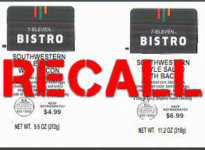In a surprise move, FDA Commissioner Scott Gottlieb announced Thursday (Oct. 18) that Stephen Ostroff FDA Deputy Commissioner for Food and Veterinary Medicine will retire in January 2019, as FDA’s top food safety official. Frank Yiannas (currently VP for food safety at and Walmart) will Step in. The FDA deputy commissioner position is being eliminated. Yiannas will go into the agency under the title Deputy Commissioner for Food Policy and Response. Yiannas will report directly to the FDA Commissioner Scott Gottlieb. “He’ll head the Office of Foods and Veterinary Medicine,” Gottlieb said in a statement today. “Dr. Ostroff was instrumental in recruiting Mr. Yiannas to the Agency. Dr. Ostroff will remain at the FDA until January as a senior advisor to me, and will help Mr. Yiannas transition into his new role.” He also said “We face a lot of new threats, and Frank has a lot of experience in deploying novel technologies to thwart emerging risks,” Gottlieb said. “I’m confident he’ll help us continue to modernize our approach to food safety.” @ https://www.foodsafetynews.com/2018/10/bulletin-ostroff-retiring-from-fda-walmarts-yiannas-moving-to-agency/
ruth
In a letter to staff, FDA Deputy Commissioner for Food and Veterinary Medicine Dr. Stephen Ostroff announced he will be retiring in January 2019. Frank Yia
ruth
{“post_id”:5217,”post_type”:”post”,”shortcode”:”peepso_postnotify”,”permalink”:”https:\/\/ask-bioexpert.com\/all\/corn-tainted-with-salmonella-and-listeria-monocytogenes-causes-ripple-recalls\/”}
ruth
October 17. 2018- CDC and public health and regulatory officials in several states are investigating a multistate outbreak of Salmonella Infantis infections linked to raw chicken products. As of October 15, 2018, 92 people infected with the outbreak strain of Salmonella Infantis have been reported from 29 states (Alabama, California, Connecticut, Delaware, Florida, Georgia, Hawaii, Illinois, Indiana, Kentucky, Louisiana, Maine, Maryland, Massachusetts, Michigan, Minnesota, Missouri, North Carolina, Nebraska, Missouri, New Jersey, New York, Ohio, Pennsylvania, Rhode Island, South Carolina, Tennessee, Texas, Virginia, and Washington). Twenty-one people have been hospitalized, and no deaths have been reported.89% of the people interviewed, reported preparing or eating chicken products that were purchased raw, including ground chicken, chicken pieces, and whole chicken. Ill people reported buying many different brands of raw chicken products from multiple stores. The outbreak strain of Salmonella Infantis has been identified in samples from raw chicken pet food, from raw chicken products, and from live chickens. WGS showed that the Salmonella from these samples is closely related genetically to the Salmonella from ill people. WGS analysis of isolates from 43 ill people and 68 food or environmental samples predicted resistance to some or all of the following antibiotics: ampicillin, ceftriaxone, chloramphenicol, ciprofloxacin, fosfomycin, gentamicin, hygromycin, kanamycin, nalidixic acid, streptomycin, sulfamethoxazole, tetracycline, and trimethoprim-sulfamethoxazole. @ https://www.cdc.gov/salmonella/infantis-10-18/index.html
CDC Investigation Notice: A multistate outbreak of multidrug-resistant Salmonella Infections has been linked to raw chicken products.
ruth
the U.S. Department of Agriculture’s Food Safety and Inspection Service (FSIS) announced that Prime Deli Corporation (Lewisville, TX) recalled ~217 pounds of ready-to-eat salad with bacon contain a corn ingredient that may be contaminated with Salmonella and Listeria monocytogenes. The salads were produced on October 13. These items were shipped to retail locations in Texas. On October 14, 2018, Prime Deli Corporation received a notification that the corn used in the production of their Southwest Style Salad with Bacon was being recalled by their corn supplier due to Listeria monocytogenes and Salmonella concerns. No Illnesses were reported. @ https://www.fsis.usda.gov/wps/portal/fsis/topics/recalls-and-public-health-alerts/recall-case-archive/archive/2018/recall-092-2018-release
Prime Deli Corporation, a Lewisville, Texas establishment, is recalling approximately 217 pounds of ready-to-eat salad with bacon products that contain a corn ingredient that may be contaminated with Salmonella and Listeria monocytogenes.


